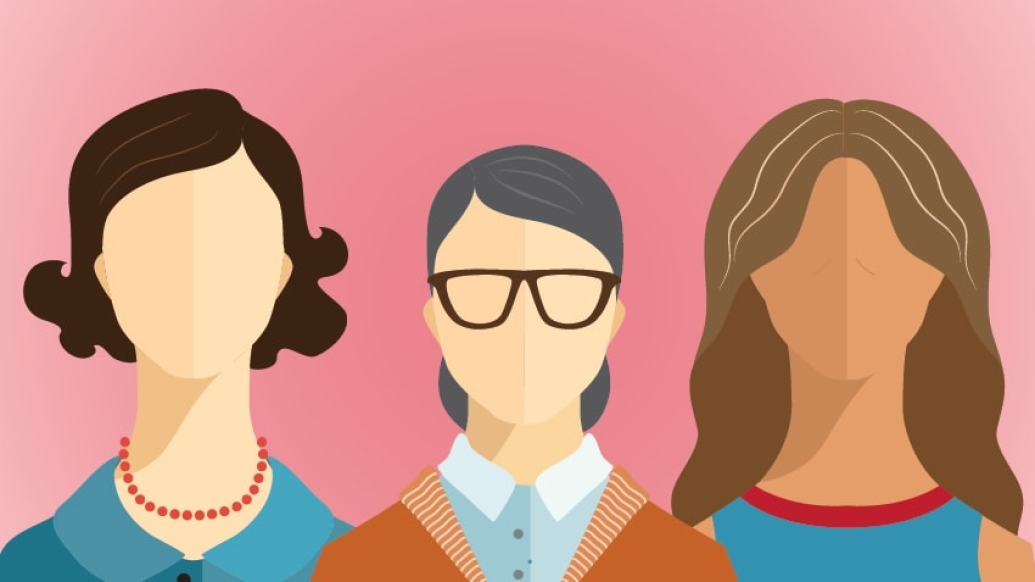Varying guidelines can make scheduling your first mammogram confusing. Talking with your doctor — and knowing your health history — can help.
7:00 AM
Author |

When should a woman get her first mammogram?
It depends whom you ask.
MORE FROM MICHIGAN: Sign up for our weekly newsletter
The age when average-risk patients are advised to start screening varies by the advisory group issuing the recommendation. So, too, does the exam's frequency.
In 2015, the American Cancer Society revised its guidelines to begin annual mammograms when a woman turns 45 — with the option to start at age 40, the society's previous threshold, if she wishes.
The National Comprehensive Cancer Network, an alliance of major cancer centers, says the test should be performed every year beginning at 40. On the other hand, the U.S. Preventive Services Task Force since 2009 has advised women 50 and older to receive biennial mammograms.
And in June, the American College of Obstetricians and Gynecologists changed its recommendations for average-risk women: Starting at 40, those patients should talk with their doctors about screening and, after a shared discussion, have the option to proceed.
The association previously advised that all women 40 and older receive annual mammograms. Now, it notes, a woman who doesn't initiate in her 40s should begin mammography by age 50.
Such shifts often make headlines. They might also leave patients confused.
Taken at face value, "these are very nuanced statistical arguments, and I think they have created a lot of uncertainty," says Mark Helvie, M.D., a professor of radiology at the University of Michigan Medical School and the director of Michigan Medicine's Division of Breast Imaging.
"But there's no ambiguity about the need for screening. The important thing is that all organizations recommend it."
What gets lost in the news coverage and conversation, notes Helvie, is that a patient and her doctor ultimately make the judgment call on when — and how often — to proceed.
"In the end," he says, "it's a woman's decision."
Starting the conversation
Breast cancer is the most common cancer in women and the second-leading cause of cancer death, according to the Centers for Disease Control and Prevention.
Mammograms, which are X-rays used to detect early signs of breast cancer, are a crucial tool.
SEE ALSO: What Women Should Know About Breast Density
Several key factors should guide a discussion of when to first carry out the test.
Among them: whether a woman has a strong family history of breast cancer without a known genetic predisposition. A breast cancer diagnosis in a first-degree relative on a woman's side nearly doubles her own risk.
Another issue is the presence of BRCA1 or BRCA2, gene mutations linked to an increased breast cancer risk — a detail that can be confirmed via genetic testing, a blood test that uses DNA analysis to check for possible mutations. MRI screening is recommended as early as age 25 among these women.
Women with dense breasts, which are marked by greater amounts of fibrous and glandular tissue than fat, have a higher risk of breast cancer. That density also makes mammograms less effective; supplemental tests such as MRI or ultrasound may be used to screen for cancer.
A history of obesity, heavy drinking or a sedentary lifestyle can contribute to developing breast cancer. So can using birth control.
Meanwhile, the American Cancer Society now distinguishes its mammography guidelines based on "strong" and "qualified" recommendations — in other words, whether performing the test outweighs any negative effects or offers benefits but less certainty about related harm, respectively.
Says Helvie: "It's the same nuance that has existed for a long time; they've just formalized it."
Risks and reward
Helvie, who sits on the guidelines panel for the National Comprehensive Cancer Network, says that doctors get two common questions about breast cancer screening.
Patients, naturally, want to know how the various group recommendations differ — and whether they need a mammogram annually or every other year.
SEE ALSO: Why You Need to Discuss Your Family Health History at Thanksgiving
Even if a woman's risk factor is low, Helvie notes that early action has benefits.
"Statistical models of screening show there's a 72 percent improvement in life years gained when a woman begins mammograms annually at 40," Helvie says, citing research on the subject he co-authored this year in the journal Cancer. "We think that's a substantial reason you want to be screened early."
Yearly screenings, he adds, increase a patient's life years gained by 25 percent compared with those who receive a mammogram biennially.
"Many physicians are unaware of that magnitude of difference," Helvie says.
Early screening does bear some risk, however — namely, the chance of false positive results that could lead to unnecessary biopsies, tests and treatment for women who don't have breast cancer (or whose cancers won't grow or cause problems otherwise).
Roughly half the women screened over 10 years will receive a false positive finding, according to the American Cancer Society. The vast majority of false positives are for extra mammogram views or ultrasound, which will prove negative. Patients and practitioners must acknowledge that potential outcome.
Still, maintains Helvie, "screening early and annually saves the most lives."

Explore a variety of health care news & stories by visiting the Health Lab home page for more articles.

Department of Communication at Michigan Medicine
Want top health & research news weekly? Sign up for Health Lab’s newsletters today!





